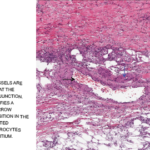With regard to the evidence, a quick Google search of the terms benefits, exercise and rheumatic disease turns up hundreds of thousands of results. A systematic review of studies published in November 2016 in the Journal of Physical Therapy Science compared the effects of rehabilitation and rheumatology care for pain relief in patients with rheumatoid arthritis (RA). It showed that physical therapy and occupational therapy interventions “are effective for pain relief in people with RA.” The authors indicate the results were “consistent with those of previous systematic reviews.”3
“There is nothing new and startling [about the benefits of exercise],” says Dr. Oatis, who works closely with the Arthritis Foundation and the U.S. Bone and Joint Initiative. “[The literature] just keeps piling up and is pretty irrefutable.”
The American College of Rheumatology website outlines a number of ways PTs benefit RA patients: developing “shared treatment goals and an individualized treatment plan” and teaching self-management skills that “help patients decide on appropriate treatment options and encourage independence in daily activities, including self-care, transfers to and from toilet and bathtub, and using public and private transportation.”4
Access to care and rising costs of care are major issues in U.S. healthcare, and physical therapy could be hit especially hard by recent legislation. In a May 23 letter to U.S. Senators, American Physical Therapy Association (APTA) President Sharon Dunn, PT, PhD, wrote that the American Health Care Act “weakens the power of federally mandated essential health benefits [EHBs], which include physical therapy, by allowing states to apply for waivers to reduce the requirements or eliminate them entirely. We believe [these changes] could hinder access for millions of Americans.”5
Dr. Oatis agrees access and costs are serious issues. Example: She points to a recent conversation she had about rising co-pays and the affordability of physical therapy, even with insurance.
“The rheumatologist was so frustrated. His patients really lacked access to care and physical therapy because the co-pays are so high,” she says, noting PTs have had to become more efficient in the limited time they are allotted with their patients. “I think that’s an area [in which] the ACR, AHRP and APTA should be teaming up to advocate for patients. It’s one thing for a patient to have a co-pay seeing a rheumatologist every three months—having a significant co-pay of $40 to $70, trying to see the PT twice a week or even once a week. It really prevents a lot of patients from accessing [physical therapy],” she says.



